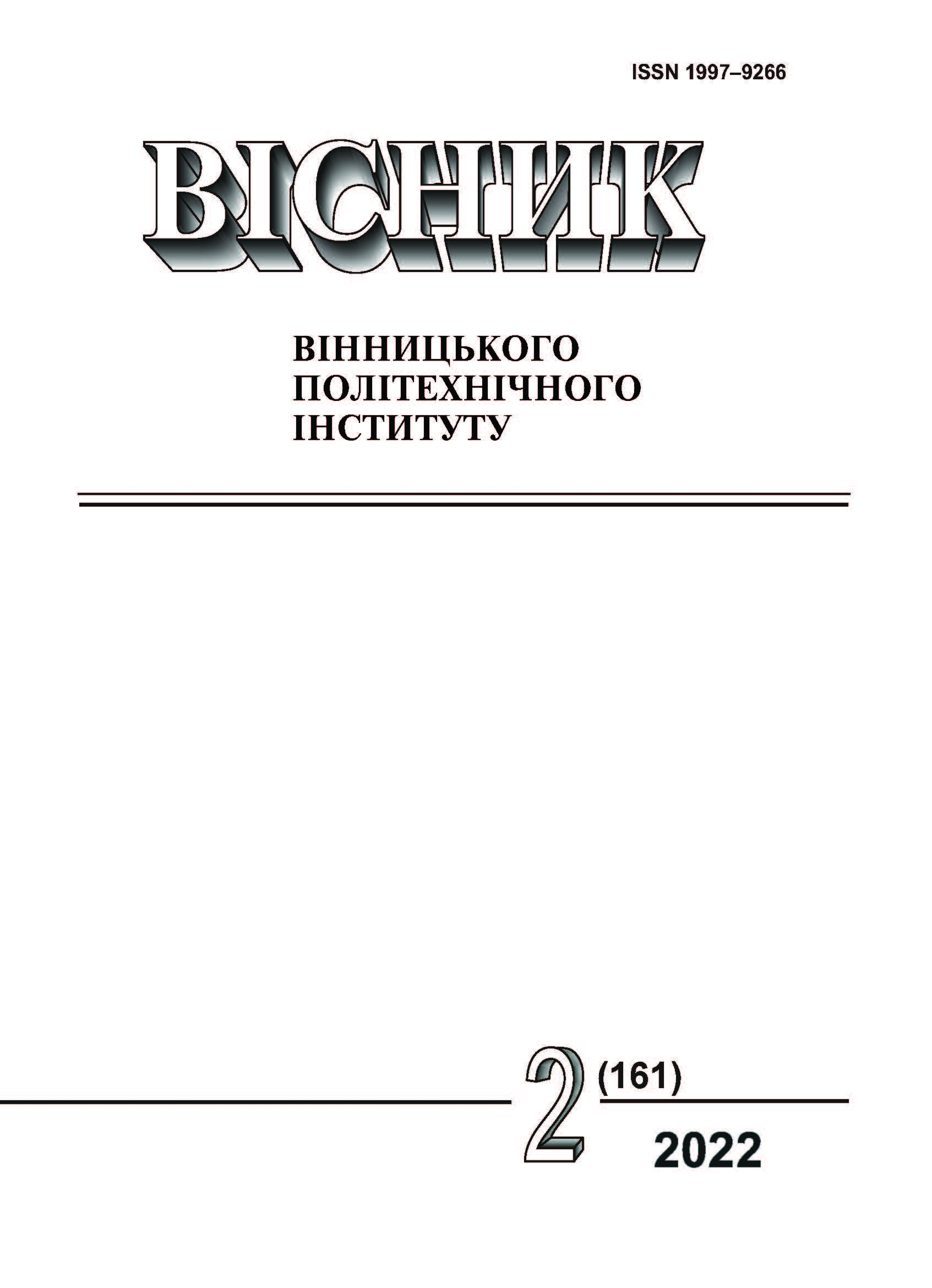Overview of 3D Geometric Control Methods Dimensions of Details
DOI:
https://doi.org/10.31649/1997-9266-2022-161-2-114-122Keywords:
3D scanning, polygonal grid, laser, image processingAbstract
A review of methods for controlling the geometric dimensions of parts and subjects, which allowed to assess the shortcomings of the methods, and select the most promising method for further improvement. With the development of 3D production technology, 3D scanning of objects has become necessary, including medical and biological ones, which can be transferred to a computer environment in a short time using optical 3D scanners instead of 3D modeling. 3D scanning allows you to digitize 3D objects and transfer them to digital format, as well as determine its geometric dimensions. Corrections can be made to the digitized model, and new forms can be added to the model as needed. Modern image processing facilities are increasingly used in many areas, such as new 3D scanning technologies in both industrial and medical fields. Do not forget that the collection of 3D data is important for other applications. Yes, they are needed in the entertainment industry to make movies and video games. This technology is also in demand in industrial design, orthopedics and prosthetics, reverse engineering, prototyping, as well as for quality control, inspection and documentation of cultural artifacts. To sync and connect with a simple cable and have software. Assembling and connecting the necessary skills or tools, however, takes less than five minutes to build a model. Individual components are light and compact, making them convenient to pack and unpack when traveling and scanning outside the lab. Production technology is carried out using computer automation of manufacturing methods. For this reason, the products are still designed in a computer environment at the stage of design, analysis, virtual reality, modeling, mold design and more. They use computer programs. It is necessary to create 3D CAD data of the product. Digitization systems are mainly used in the manufacturing sector to create CAD parts data without 3D data or for quality control, which is why the methods require more detailed consideration.
References
В. А. Сойфер, Методы компьютерной обработки зображений. М., РФ: ФИЗМАТЛИТ, 2003, 784 с.
А. Ронкат, Ю. Дублянський, Ч. Шпетл, і П. Дорнінгер, «3D зйомка печери : приклад із Märchenhöhle (Австрія)», з Marschallinger R. & Zobl Ф., Математичні науки про Землю на стику теорії та практики,» в Матеріали конференції IAMG2011 , 5-9 вересня, Зальцбург, Австрія, 2011, с. 1393-1403.
Р. Тоблер, і С. Майєрхофер, «Сітчаста структура даних для візуалізації та підрозділ,» в Дж. Хорхе, В. Скала, Ред., 14-та Міжнародна конференція у Центральній Європі з комп’ютерної графіки, візуалізації та комп’ютерного зору (WSCG’2006) Short Communication Papers Proceedings, 2011, с. 157-162.
Б. Пуччі, і А. Марамбіо, «Печера Олердоли, Каталонія: віртуальна реальність реконструкція з наземного лазерного сканера та даних ГІС,» 3D віртуальний реконструкція та візуалізація складних архітектур, Труди ім ISPRS International Workshop 3D-ARCH, 2009.
П. Чиньоні, М. Калльєрі, М. Корсіні, М. Деллепіане, Ф. Гановеллі, і Дж. Ранцулья, «Meshlab: інструмент обробки сітки з відкритим кодом,» В. Скарано, Р. Де К’яра і У. Ерра, Ред. Італійська секційна конференція Eurographics, 2008, с. 129-136.
Б. Раду, Р. Казинс, і С. Казинс, «3D тут: бібліотека хмар точок (PCL),» на Міжнародна конференція IEEE з робототехніки та автоматизації (ICRA ), Шанхай, Китай, 2011.
Р. Альварес, Ж.-В. Ногера, Л. Тортоса, і А. Самора, «Оптимізація сітки алгоритм на основі нейронних мереж,» Інформаційні науки, міжнар журнал, т. 177, вип. 23, грудень 2007 року.
Р. Чжан, «Згортання краю покращило тривимірну модель на основі моделі Алгоритм стиснення даних моделі поверхні,» Journal of Chemical and Pharmaceutical Research, 2014. [Електронний ресурс]. Режим доступу: www.jocpr.com .
Т. Ма, Г. Гонг, і Дж. Ян, «Алгоритм спрощення 3D-моделі на основі edge-collapse,» на Міжнародна конференція IEEE з промислової інформатики (ІНДІН) , 2012.
Д. Атталі, А. Льєтьє, і Д. Салінас, «Колапсуючи комплекси рипсів», на 29-е Європейський семінар з обчислювальної геометрії ( EuroCG ), 2013.
Д. Шодек, М. Бехтольд, К. Гріггс, К. М. Као, і М. Стейнберг, Застосування CAD/CAM в архітектурі та дизайні. John Wiley & Sons, Inc; Нью-Йорк, 2005. Цифровий дизайн і виробництво.
А. А. Бернард, «Огляд найсучаснішої зворотної інженерії,» на Матеріали конференції TCT, Ноттінгем, Великобританія, жовт. 1999, с. 177-188.
Т. Вараді, Р. Мартін, і Дж. Кокст, «Зворотне проектування геометричних моделей – вступ,» Дез. об. 29, с. 255-268, 1997.
J. Peipe, and H. J. Przybilla, «Моделювання Золотої Мадонни,» Cipa 2005, XX Міжнародний симпозіум , Турін, Італія. 26 вересня – 1 жовтня 2005 р.
S. Seokbae, P. Hyunpung, and H. L. Kwan, “Implementation of 3D Optical Scanning Technology for Automotive Applications,” Int. J. Mach, с. 889-897, 2002.
G. Tognola, M. Parazzinia, C. Sveltob, P. Ravazzania, and F. Grandoria, “An Effective Approach to the Use of 3D Scanning Technology which Shortens the Development Time of 3D Models,” Image Vision Computing, с. 295-305, 2003.
S. V. Kozlov, V. V. Vyun, and G. B. Aleksin, [Electronic resource]. Available:
https://repo.dma.dp.ua/4073/1/sme_2018_1_78-81.pdf .
Й. Й. Білинський, і С. В. Юкиш, «Апаратно-програмна реконструкція тривимірного рельєфу поверхні спини людини,» Інформаційні технології та комп’ютерна техніка. Наукові праці ВНТУ, 2010, № 1. [Електронний ресурс]. Режим доступу: https://praci.vntu.edu.ua/index.php/praci/article/view/194 .
Downloads
-
pdf (Українська)
Downloads: 326
Published
How to Cite
Issue
Section
License

This work is licensed under a Creative Commons Attribution 4.0 International License.
Authors who publish with this journal agree to the following terms:
- Authors retain copyright and grant the journal right of first publication.
- Authors are able to enter into separate, additional contractual arrangements for the non-exclusive distribution of the journal's published version of the work (e.g., post it to an institutional repository or publish it in a book), with an acknowledgment of its initial publication in this journal.
- Authors are permitted and encouraged to post their work online (e.g., in institutional repositories or on their website) prior to and during the submission process, as it can lead to productive exchanges, as well as earlier and greater citation of published work (See The Effect of Open Access).





